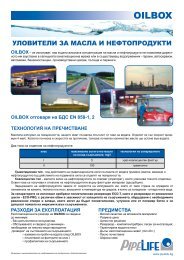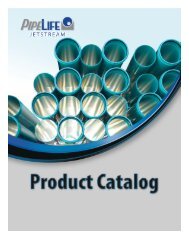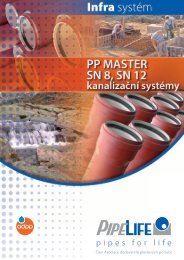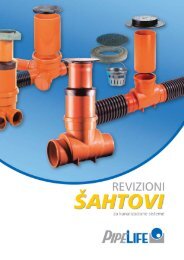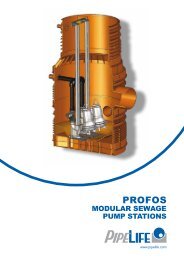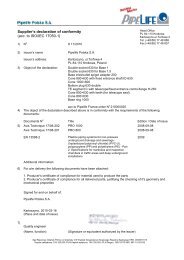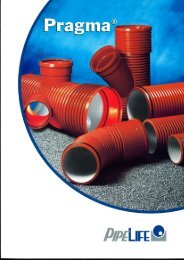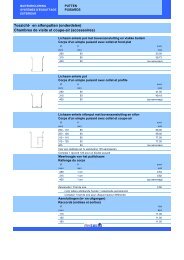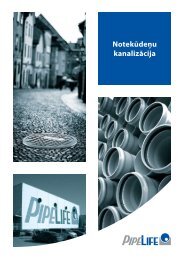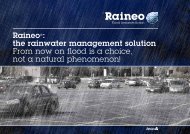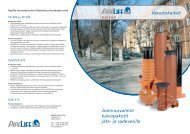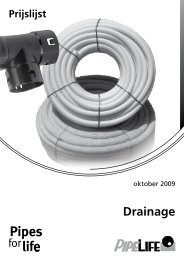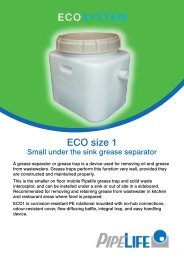PE Pipe Technical Catalogue (PDF) - Pipelife Norge AS
PE Pipe Technical Catalogue (PDF) - Pipelife Norge AS
PE Pipe Technical Catalogue (PDF) - Pipelife Norge AS
Create successful ePaper yourself
Turn your PDF publications into a flip-book with our unique Google optimized e-Paper software.
<strong>Pipe</strong>life <strong>Norge</strong> <strong>AS</strong><strong>PE</strong> CATALOGUE-SUBMARINE APPLICATIONS, PI<strong>PE</strong>LIFE NORGE <strong>AS</strong>, December 2002.Special problems to be aware of :− Under-pressure− Fouling− Air release− Current− WavesThe intake end of the pipeline is normally supplied with a screen.Fig. 0.1.1.1 shows an example from a river water intake. The figure shows a new water intakein Glomma river. The 1200 mm diameter pipeline in 3 km long. The pipe material is <strong>PE</strong> PN80SDR17.The hydraulic capacity is 1.5 m 3 /sec. The whole pipeline lies in a ditch 2-3 m deep for protectionagainst current, erosion, ice and floating timber. <strong>PE</strong>-pipes were chosen because of their flexibility,strength and ease of installation.Fig. 0.1.1.1 River water intake0.1.2 Transit pipelineIn many cases it can be suitable to cross lakes and fiords by subwater pipelines instead of usinga longer route along the waterside.In other situations it is necessary to cross rivers and seas to supply cities and islands with water,or to remove wastewater.The water can be transported by gravity or by pumping. During operation there is always anoverpressure in the pipe except in case of pressure surge.It is normal to install a manhole/shaft on each waterside to establish an interface between the underwater pipeline. The equipment in the shafts depends on the service level. It is normal to install shutoffvalves.Special problems to be aware of for transit pipelines are:− Pressure− Air transport− Current− Waves− Fishing equipment− AnchoringFig. 0.1.2.1 indicate a river crossing. The figure shows a profile of a <strong>PE</strong>-pipeline, a seweragecrossing of the Glomma, the longest river in Norway. The diameter of the pipeline is 600 mm and itswall thickness is 55 mm (PN10). The line length is 450 m. A five-metre deep pipeline-trench at theriver bottom was required to avoid damages to the pipeline from boat anchors. A <strong>PE</strong>-pipe waschosen because of its flexibility, which permitted producing the whole length in one piece atSide 5 av 84



